Project details
Skill
Cost
Estimated Time
Creating a custom end grain cutting board is a rewarding woodworking project that combines craftsmanship with practicality. Not only does it provide a durable surface for food preparation, but it also showcases the natural beauty of wood grain.
In this article, we’ll guide you through the process of making your own end grain cutting board using salvaged wood. This Old House expert, Tom Silva, demonstrates the techniques for crafting a unique, functional, and visually striking piece.
Choosing the Right Wood
You’ll need to select the right wood to make a high-quality end grain cutting board. While you can use various types of wood, some are better suited for this project than others.
Best Woods for End Grain Cutting Boards
When choosing wood for your cutting board, consider the following options:
- Cherry: With its reddish hue, cherry provides both beauty and strength.
- Maple: Known for its hardness and tight grain, maple is an excellent choice for cutting boards.
- Oak: While dense and durable, oak should be used cautiously due to its open grain structure.
- Walnut: This dark wood offers a rich color and good durability.
In the video above, Silva uses salvaged heartwood from a longleaf pine. This wood is popular for its strength, rich color, and hardness. However, due to overharvesting, the primary sources of heart pine are reclaimed wood from old buildings or recovered logs.
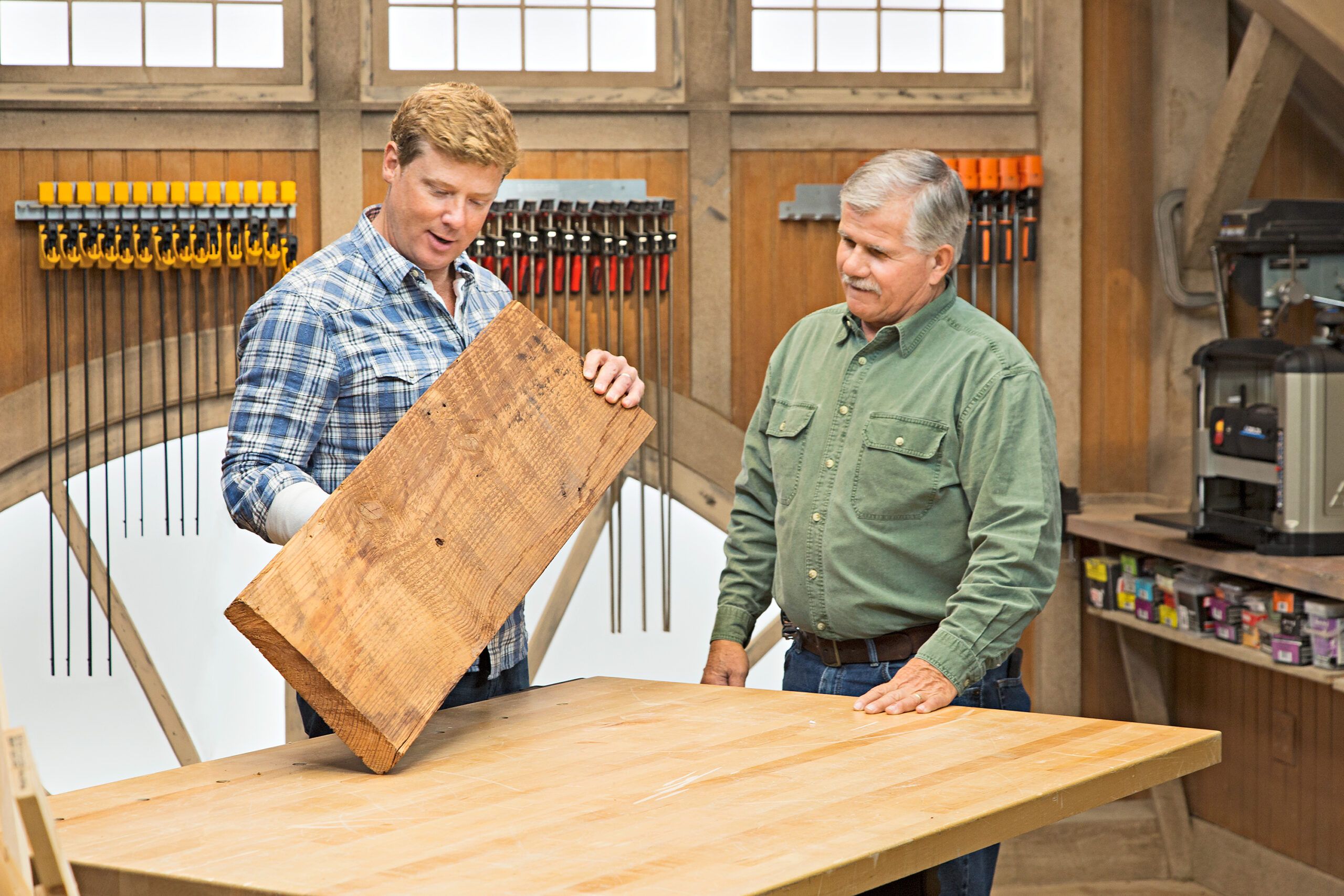
Benefits of Using Salvaged Wood
Utilizing salvaged wood for your cutting board project offers several advantages:
- Cost-effectiveness: Salvaged wood can be less expensive than purchasing new lumber.
- Historical value: Using reclaimed wood adds a story to your cutting board.
- Unique character: Reclaimed wood often has distinctive grain patterns and coloration.
- Sustainability: Repurposing wood reduces waste and conserves resources.
Preparing the Wood
Before you begin constructing your end grain cutting board, it’s essential to properly prepare the wood. Proper preparation ensures that your cutting board will be both functional and aesthetically pleasing.
Planning and Squaring
Start by running your salvaged wood through a benchtop planer to flatten both faces. This step ensures a consistent thickness throughout the board. Next, use a miter saw to crosscut the planed wood into two equal pieces and square up the ends. Properly squaring the ends makes the assembly process smoother and results in a more professional-looking final product.
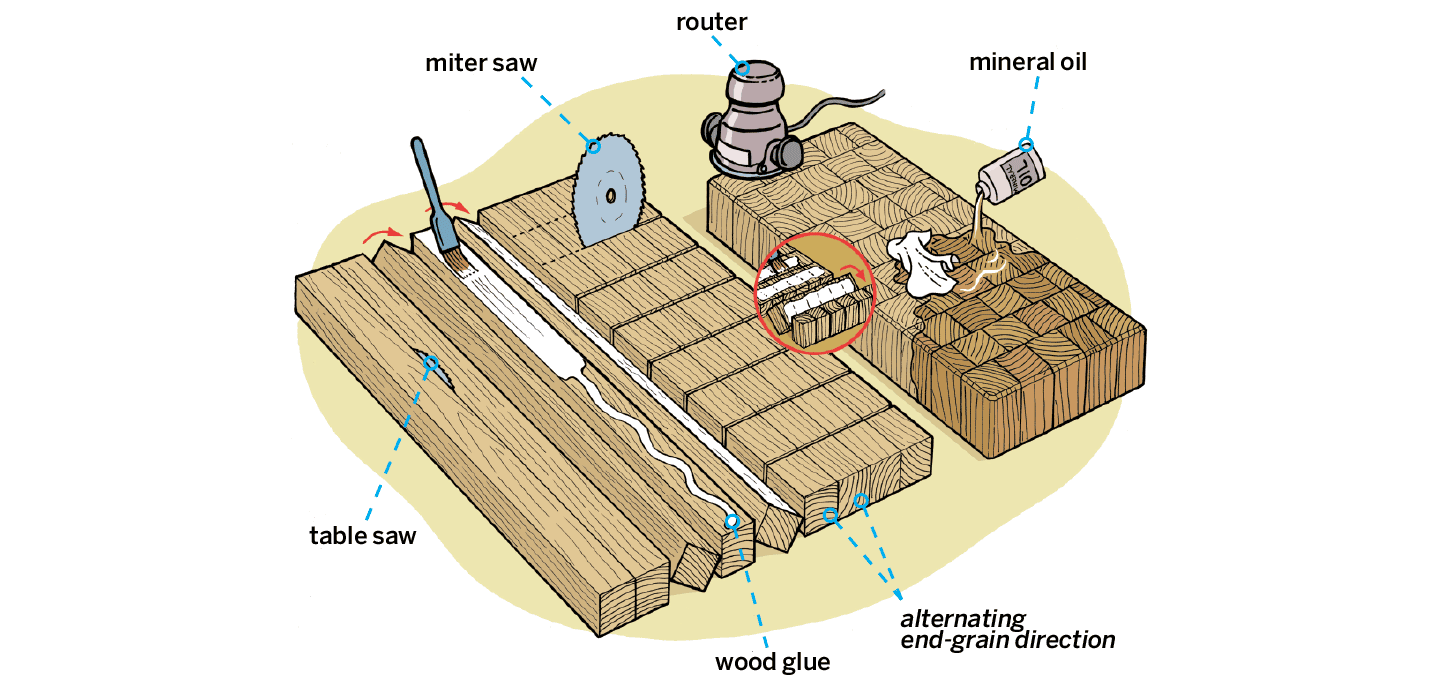
Ripping into Strips
Using a table saw, trim any weathered edges from the boards. Then, rip the boards into strips of equal thickness on all four sides. Tom recommends using a push stick for safety during this process. The uniformity in thickness will help in achieving a seamless final product. Be sure to handle the table saw carefully to avoid kickback and ensure precise cuts.
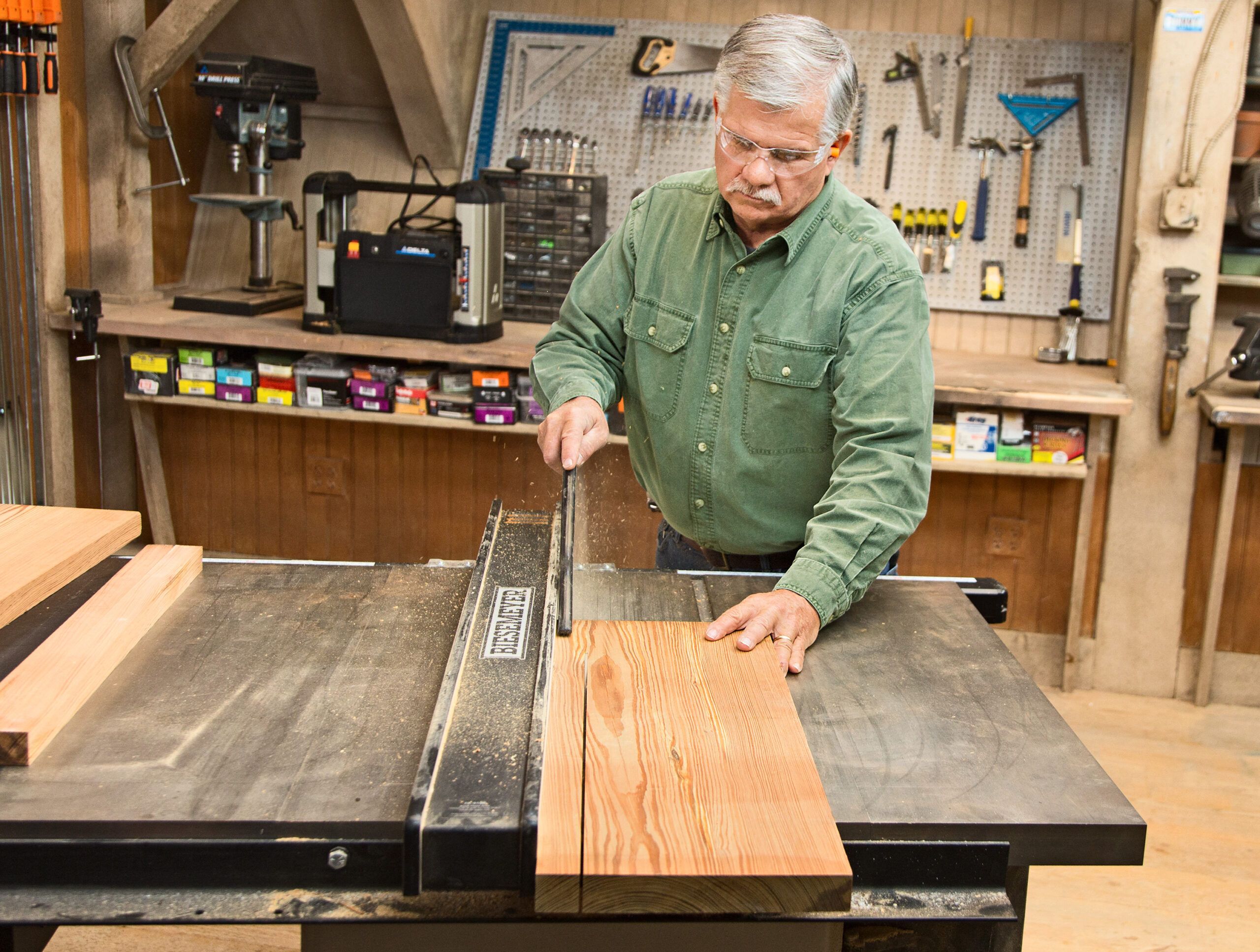
Assembling the Cutting Board
With your wood prepared, it’s time to begin assembling your end grain cutting board.
Alternating the Grain
To prevent warping and splitting, alternate the direction of the end grain when assembling your board. Divide your strips into two groups and rotate each strip so that the grain direction varies from one strip to the next. Alternating the grain direction ensures the board remains flat and stable. Plan your assembly on a flat surface to keep everything aligned.
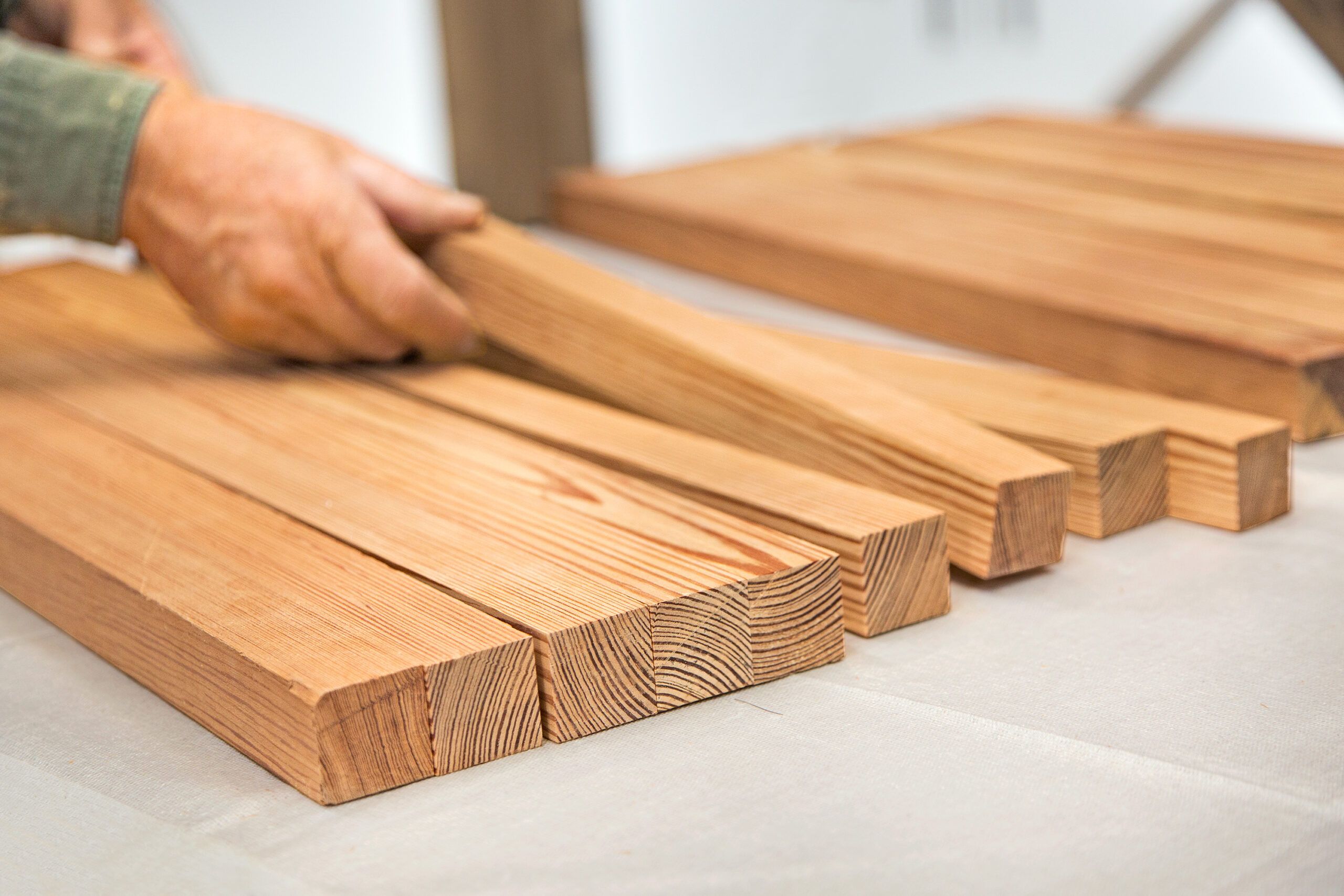
Gluing the Strips
Apply wood glue evenly across the strips for complete coverage. Tom demonstrates using an acid brush to spread the glue, followed by a stick for more thorough distribution.
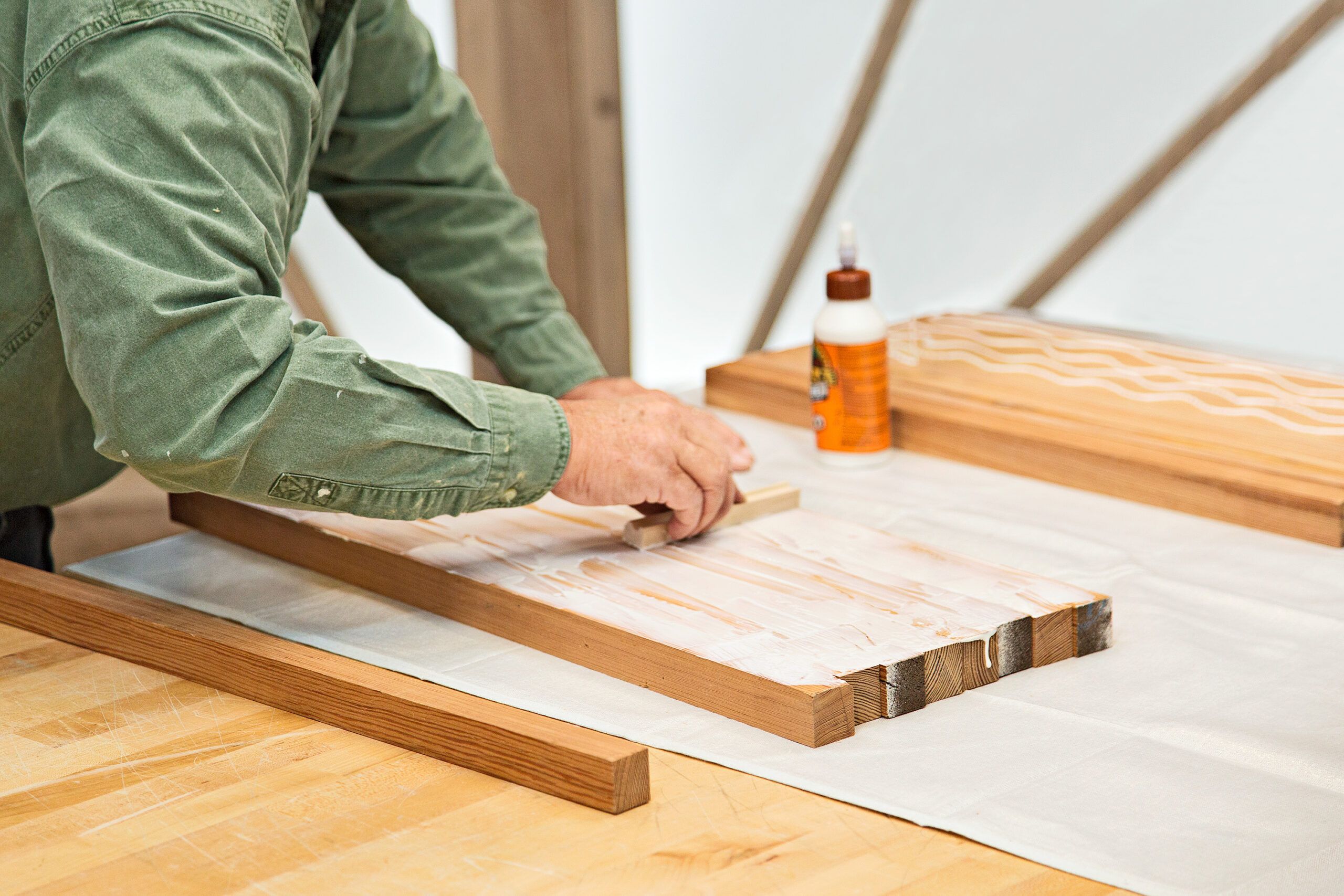
Clamp the assembled strips into two panels, wiping away any excess glue with a damp rag. The clamping pressure should be even across the panels to avoid gaps. Secure the clamped panels on a stable surface and let them dry thoroughly before proceeding.
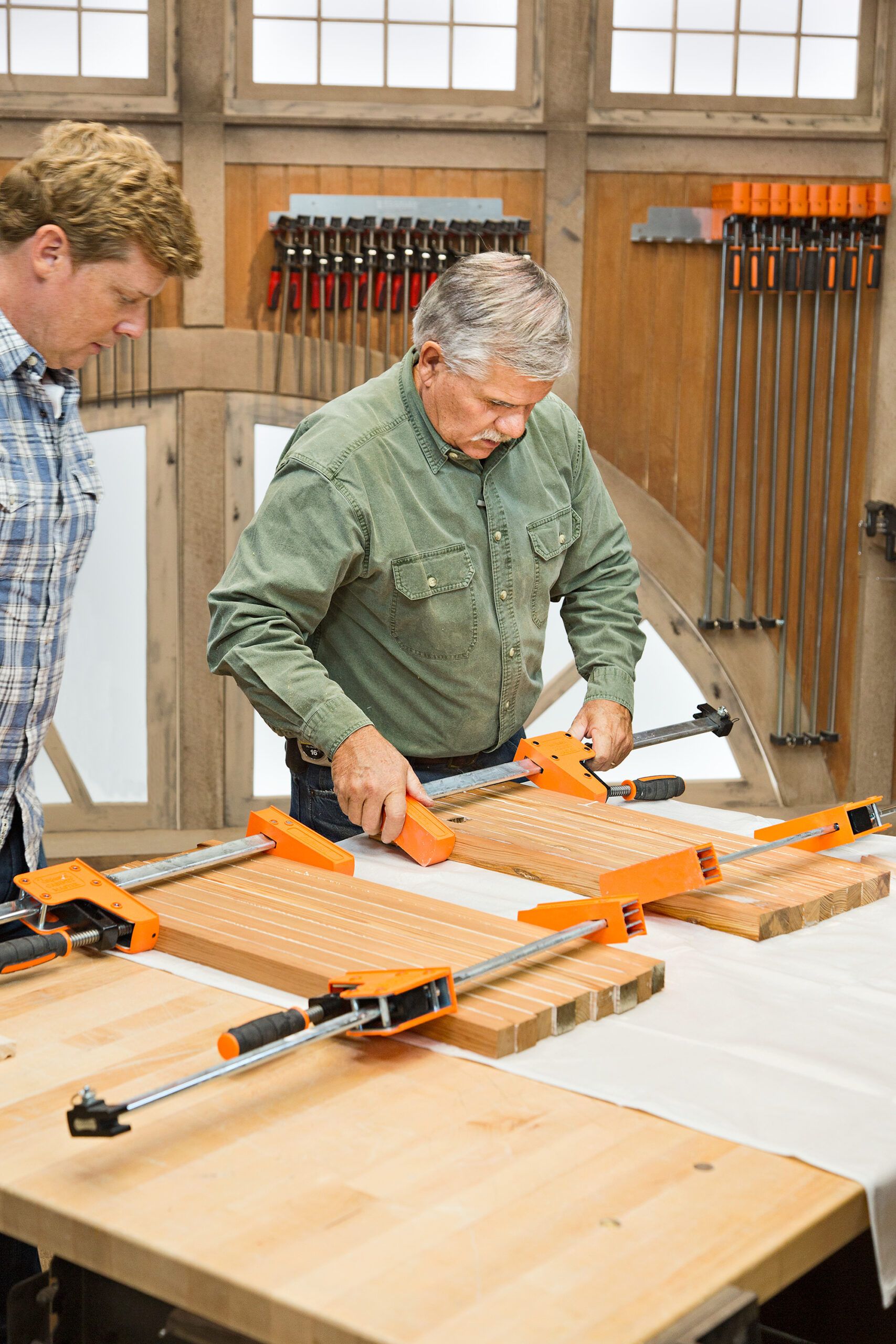
Creating the End Grain Pattern
Once the glue has dried, cut the panels into identically sized strips using a miter saw. Arrange these strips with the end grain facing up, offsetting the glue joints to create an attractive pattern. Glue these strips together to form a single panel, clamping a 2×4 to each end to prevent chipping during the next steps.
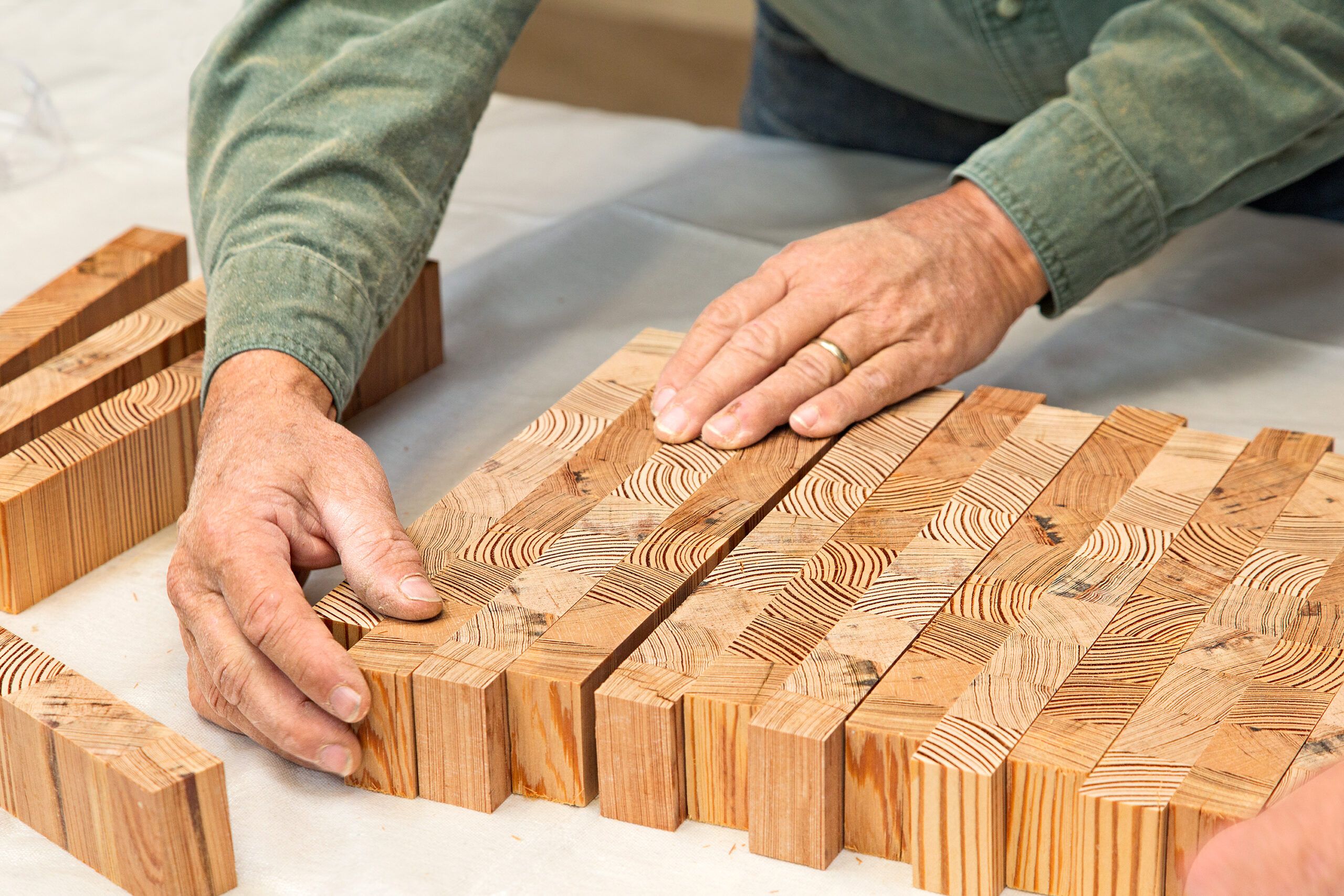
This 2-inch-thick plank of salvaged longleaf pine—about 3 feet long and 1 foot wide—provides all the wood you’ll need for this project. Run it through a planer to flatten both faces, then use a miter saw to crosscut it into two equal pieces and to square up the ends.
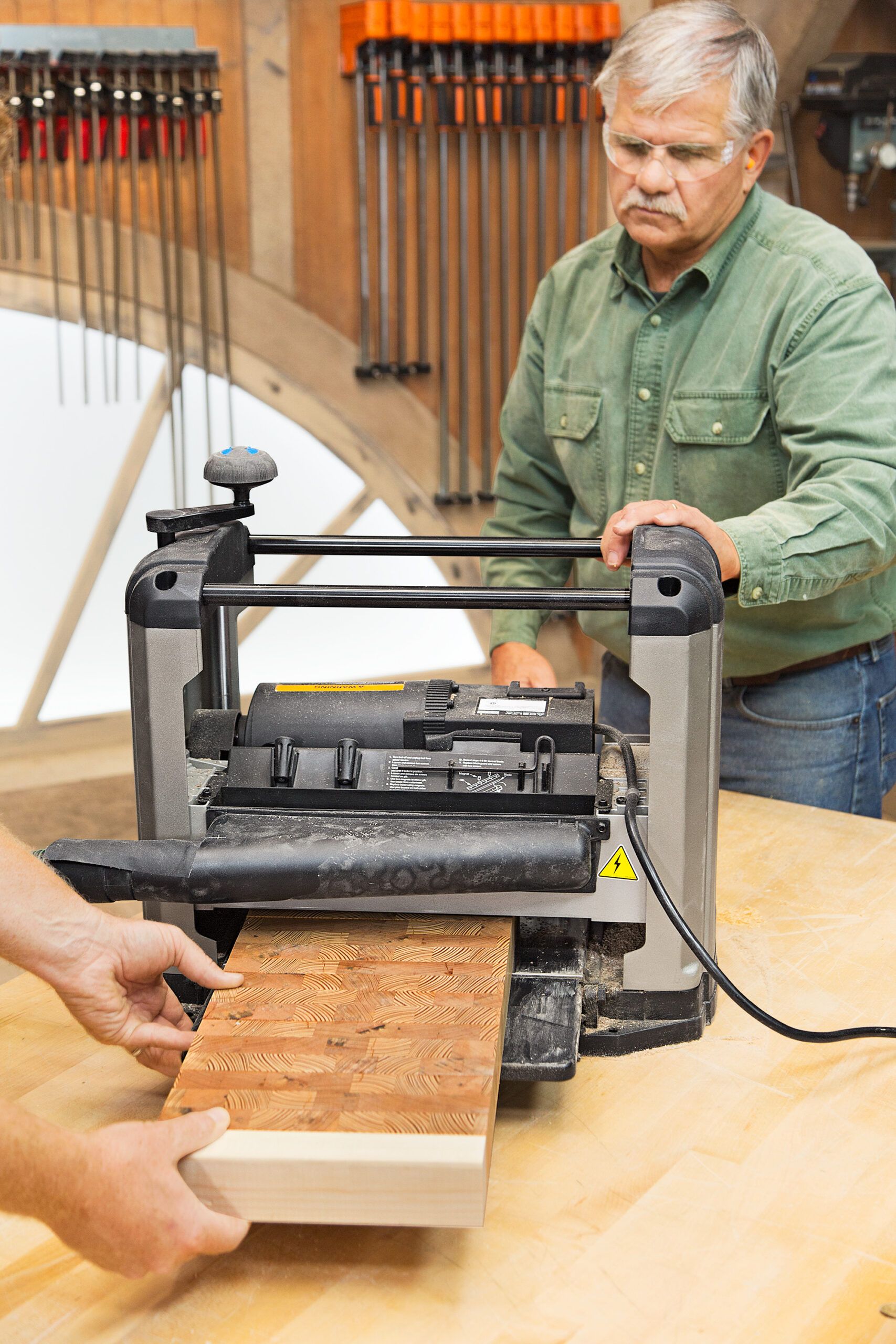
Tips for Using a Thickness Planer
- Metal check. Before you start, make sure the board you’re planing has no embedded nails. They can ruin planer knives.
- This end first. If the grain on the board’s side slopes, feed the board into the planer beginning with the end toward which the grain slopes. Feeding it the other way may tear the surface rather than smooth it.
- This side down. If the board is cupped from side to side, place the concave side against the planer table, flatten the convex side first, and then plane the concave side.
- Just a little at a time. Set the planer depth to remove only about 1⁄16 inch of wood at a time. That enables the planer blades to spin at a high rpm for a smoother surface.
Finishing the Cutting Board
The final steps involve shaping and treating your end grain cutting board—attention to detail in the finishing process can significantly enhance the board’s appearance and lifespan.
Trimming and Planing
Use a circular saw with an edge guide to square one side of the board, then trim the other side with a table saw. Run the board through a planer to smooth out the faces, removing the sacrificial 2x4s afterward. The trimming process helps to achieve a uniform appearance.
Routing and Sanding
Round over each vertical corner using a router, then create a cove in the top and bottom edges for easier handling. Sand all sides of the board with a random-orbit sander, starting with 100-grit sandpaper and progressing to 320-grit for a smooth finish. Proper sanding removes any rough edges and prepares the surface for oil application. Pay special attention to the edges and corners to ensure a rounded, smooth finish.
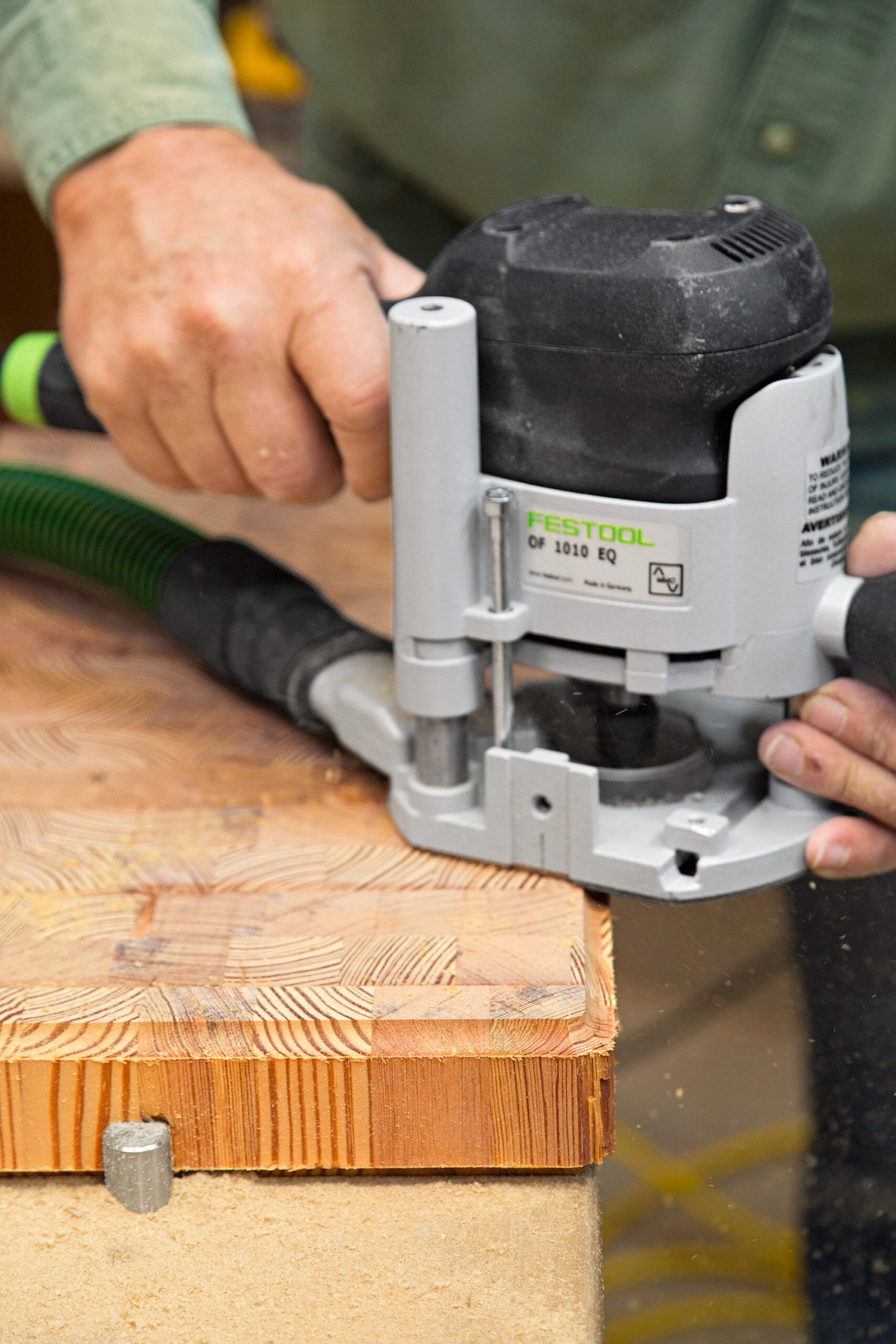
Applying Mineral Oil
To protect your cutting board and enhance its appearance, apply mineral oil to every side. Allow the oil to soak in for about 20 minutes, then wipe off any excess. Repeat this process for thorough coverage. This food-grade oil warms up the wood’s color, repels water, and protects against stains. Regular oiling maintains the board’s finish and helps prevent drying and cracking.
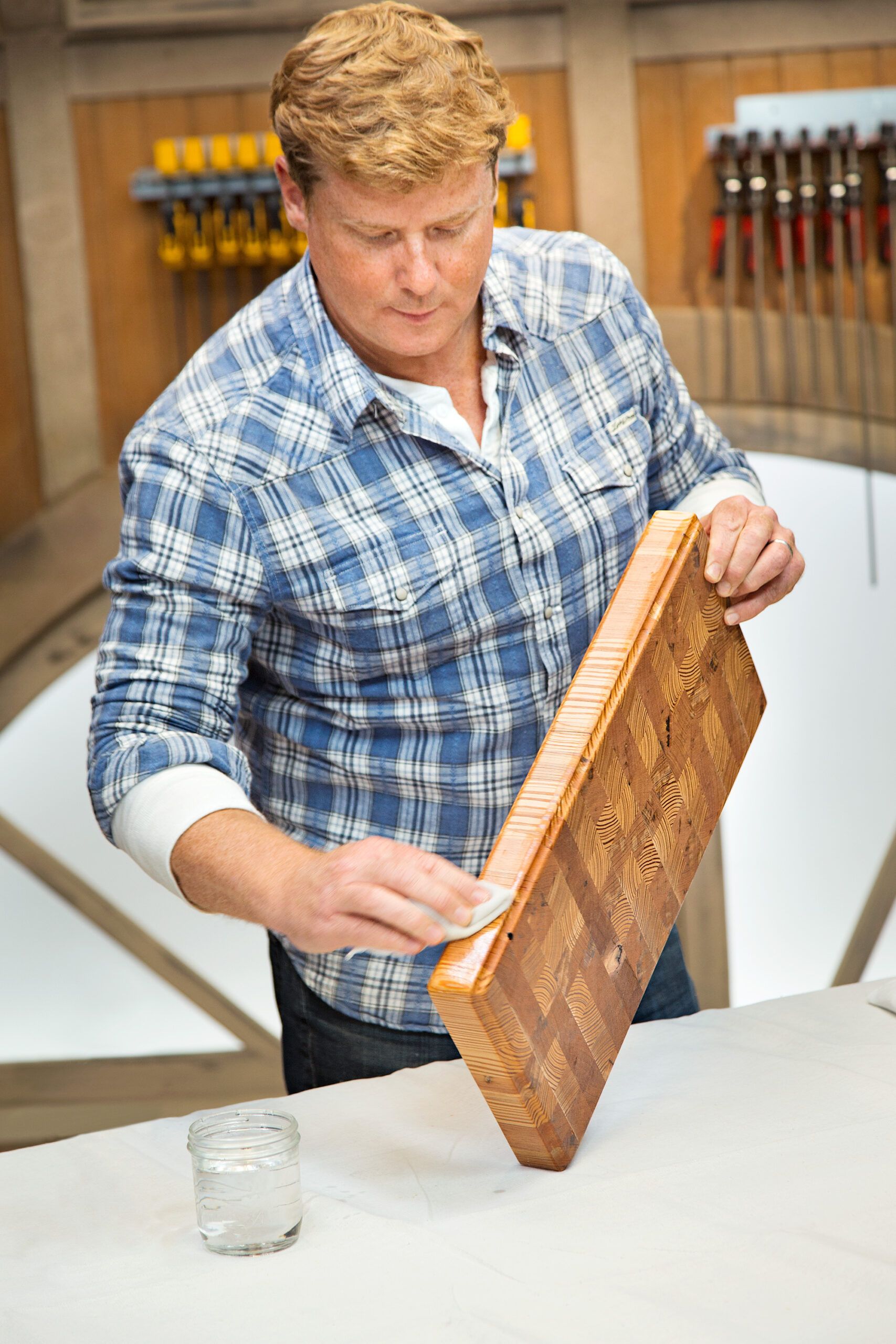
Customizing Your Cutting Board
Adding personal touches to your cutting board can add a unique flair. Here are just a few ideas.
Inserting Handles
Incorporate handles into the design of your cutting board for better control. Either carve recessed handles into the body of the cutting board or attach drawer handles to the sides for gripping.
Adding Decorative Elements
Consider adding decorative inlays or engravings to personalize your cutting board. You can create these elements using contrasting wood types, metals, or other materials.
Creating Juice Grooves
You can also add juice grooves along the edges of your cutting board to catch liquids and prevent spills. Use a router to create a shallow groove around the perimeter, ensuring smooth and even cuts.
Maintaining Your End Grain Cutting Board
To keep your cutting board in top condition, follow these maintenance tips:
- Avoid soaking the board or putting it in the dishwasher. Excessive moisture can damage the wood and compromise the board’s structure.
- Clean the board with mild soap and water after each use, drying it thoroughly.
- Reapply mineral oil regularly, especially when the wood appears dry. Regular oiling helps maintain the wood’s natural luster and prevents drying and cracking.
- Sand out any deep knife marks as needed to maintain a smooth surface.
- Use both sides of the board evenly to prevent warping. Rotating usage helps to distribute wear evenly and extends the board’s lifespan.
Our Conclusion
By using salvaged wood and following Silva’s techniques, you can craft a unique piece that will be a cherished part of your kitchen arsenal. The combination of craftsmanship, sustainability, and practical use makes this project a worthwhile endeavor for any woodworking enthusiast.
Tools:
 Benchtop planer
Benchtop planer Miter saw
Miter saw Table saw
Table saw Bar clamps
Bar clamps Circular saw with rip fence
Circular saw with rip fence router
router roundover bit with bearing – 1/2-inch
roundover bit with bearing – 1/2-inch cove router bit with bearing – 3/8-inch
cove router bit with bearing – 3/8-inch Random orbit sander
Random orbit sander









